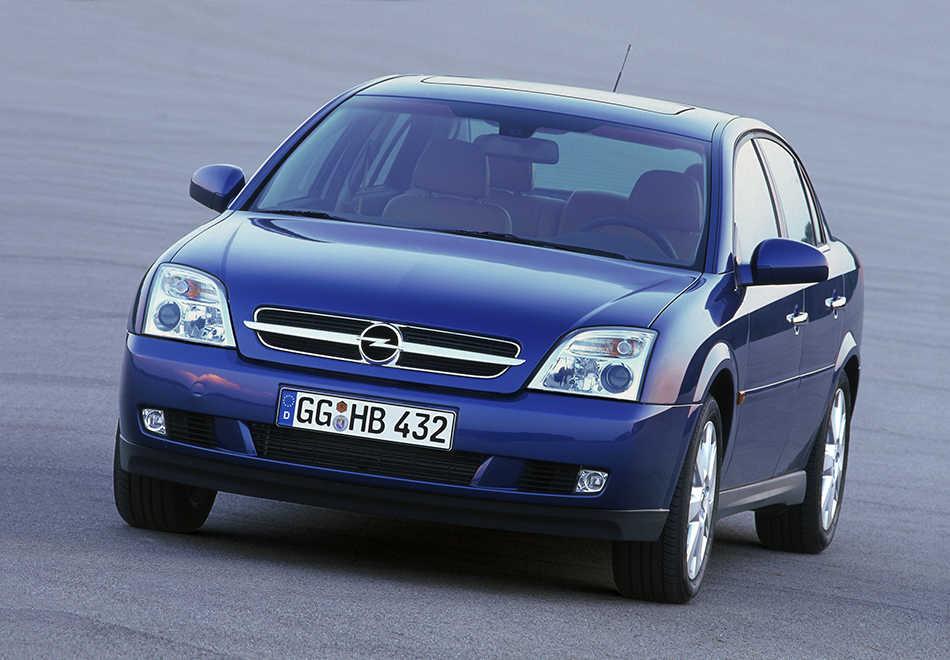The all-new Vectra opens an impressive new chapter in Opel's successful history in the midsize market segment. The model range is a completely new, driver-oriented design with pioneering technology, high comfort and a particularly spacious interior. The distinctive new styling will characterize the appearance of Opel cars in the future. Following investments of almost Euro 800 million, production will begin in January 2002 in Russelsheim, in Europe's most modern automobile plant. Featuring IDS (Interactive Driving System), an innovative chassis system, the new Vectra will make its world premiere next March at the Geneva Motor Show. Sales will start shortly after.
Opel's new midsize model will be available first as a four-door sedan with four-cylinder ECOTEC engines, ranging in power output from 90 kW/122 hp to 108 kW/147 hp (gasoline) and from 74 kW/100 hp to 92 kW/125 hp (diesel). Opel will offer a five-speed automatic transmission with Active Select (manual-shift function) for the first time on the Vectra. The particularly sporty Vectra GTS is powered by a 155 kW/211 hp 3.2-liter V6. The coupe-like GTS, the most powerful Vectra ever with 300 Nm of torque, will join the line-up in summer 2002.

The new Vectra model range will be extended in the next two years with the introduction of additional innovative body-styles, engines and gearboxes. Together with the progressive increase in production capacity, including assembly at the modernized Ellesmere Port plant in England, these will pave the way for the Vectra's return to the top of the European midsize market.
Opel's worldwide success in this segment dates back to 1970, as documented by three generations of the Ascona (4.4 million units) and two of the Vectra (4.5 million). The current Vectra was not only the national best-seller in its class in many countries, it also led the total European midsize segment from 1996 to 1998.
The all-new IDS chassis system is one of the highlights of the third-generation Vectra. Featuring a new multi-link rear axle, Electro-Hydraulic Power Steering with electronic map-control, and aluminum components for reduced unsprung weight, IDS provides significantly improved handling and ride comfort. Active safety is increased further by ESPPlus, an all-new electronic stability program which is making its debut in the new Vectra. In contrast to conventional ESP systems, which prevent severe understeer by braking the rear wheel on the inside of the corner only, ESPPlus enhances stability by applying the brakes at up to three wheels. The stabilizing correction is therefore significantly more progressive and effective.
The body of Opel's new midsize contender meets the highest demands in its class for stability, safety, comfort and quality, thanks to lightweight, high-grade materials such as aluminum, magnesium, and high-strength, as well as boron-alloy steel. Compared with the previous model, the torsional rigidity of the new Vectra has thus increased by 74 percent to 18,000 Nm/degree, and the bending rigidity by 62 percent.
The new Vectra's confident, distinctive design is a template for future Opel models. Its clear-cut contours emphasize the larger dimensions: Thanks to the longer, 2.70-meter wheelbase (+ 60 millimeters), wider tread (+ 52 mm front/+ 45 mm rear) and the higher roof (+ 52 mm), the new model offers significantly more interior space than its predecessor. The aerodynamic form (drag coefficient: 0.28) and sophisticated sound-attenuation measures make the new Vectra especially quiet, both inside and out.
The passive safety equipment includes as standard front, side and Full-Size Curtain Head Airbags, Opel's patented Pedal Release System, and further improved Active Head Restraints for protection from whiplash injuries.
So that owners benefit from minimal running costs, Opel has paid special attention to such areas as strict quality control in the plants, easy-to-repair design and achieving moderate insurance classification. These measures are backed up by a two-year warranty with unlimited mileage, extensive galvanization of the body (12-year anti-perforation warranty), extended service intervals (24 months/30,000 km gasoline engines; 24 months/50,000 km diesel).
Source: Opel




















